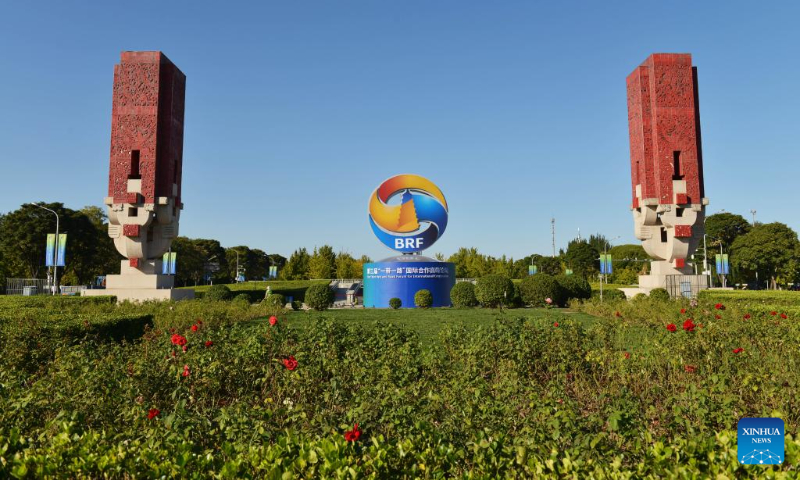
This photo taken on Oct. 14, 2023 shows a floral decoration for the third Belt and Road Forum for International Cooperation (BRF) near Beichen Road in Beijing, capital of China. The BRF will be held from Oct. 17 to 18 in Beijing. (Xinhua/Ren Chao)
A research center focused on the study of the history of the Northeast Asian section of the ancient Silk Road has recently opened under the purview of Heihe University in Northeast China's Heilongjiang Province.
Specific subjects such as art archaeology, rock painting studies, ancient ethnic music as well as studies on cultural relics will be the center's major focuses.
Historian Fang Gang told the Global Times that China's Northeast Asian Silk Road culture expanded alongside historical periods like the Han (206BC-AD220), Wei (220-265), Jin (265-420) and also the Yuan (1279-1368) dynasties.
"Its history lasts for more than 2,000 years. It has witnessed several ethnic groups in the northern part of China seeking exchanges with the Central Plains," Fang told the Global Times.
For example, the Bohai Kingdom, a local ethnic regime in ancient China, presented tribute more than 120 times to China's Central Plains empire during the Tang Dynasty (618-907). To show mutual appreciation, the Bohai Kingdom was awarded with dazzling silk and brocade treasures from the Central Plains.
"The subject of ethnic cultural diversity is significant in Northeast Asian Silk Road studies," Fang remarked.
Other than local ethnic cultures, the "East and West cultural exchanges" along the Northeast Asian Silk Road is also valued by the center.
Ma Lüwei, an archaeologist who specializes in ancient geography and military history, told the Global Times that the Northeast Asian Silk Road culture "ties the countries of China, Russia, Mongolia, South Korea and Japan together."
"One of the purposes of studying its history is to find more subjects that the five countries can collaborate on today. Academic collaboration is a major path to enhancing the understanding of different cultures," Ma told the Global Times.
Prior to the establishment of the center, in 2016, Russia's Amur State University co-launched a research base with Heihe University to study the ancient civilization that emerged along the Heilongjiang River, which is known in Russia as the Amur River. The river flowing through Russia, China and also Mongolia, and it was the third biggest river in China aside the Yangtze River and the Yellow River.
Over the past year, the China-Russia archaeological team has achieved fruitful results.
They have found ancient relic sites dating back to the Neolithic Age and also tomb ruins that belong to the ancient Mohe regime.
A symposium has also been held to compliment the opening of the center. China and Russia's cultural exchanges during the middle of the 19th century was one of the topics that were shared by scholars at the event.
URL: https://www.seeglobalnews.com/read-2420.html